What Would Happen If the Earth Stopped Rotating?
We have always read in school science books that the Earth rotates. I have read this so many times, but as a child, I always wondered if the Earth is spinning so fast, why don’t we feel it. Not even the smallest movement. I used to think maybe day and night happen because we see the Moon and the Sun moving, since their movement is visible to our eyes.
As a curious student, technical explanations never made me excited. Speed, forces, and scientific words felt boring. But science fiction always caught my interest. I wanted to know why things happen the way they do and what would happen if they didn’t.
I told all this to Dr. Sarah Aris. She calmly listened and smiled. “This is not only your question. Many people feel the same. I also had this question once. I will not tell you a theory. You can find that in books or on Google. I want you to experience it yourself.”
She walked to her desk and opened a glass box. Inside was a pair of black glasses with a soft blue light on the sides. She picked them up and came back to me.
“These are called HoloSpecs,” she said. “They are not normal glasses. When you wear them, they connect with your thoughts. The first thing you imagine will be locked and the simulation will start. It will run until you take off the glasses. Even if you get distracted, the glasses keep showing the same scene until the end. You will not just see it. You will feel it. The wind, the heat, the pull of gravity, everything will feel real. They also have small buttons to turn them on and off.”
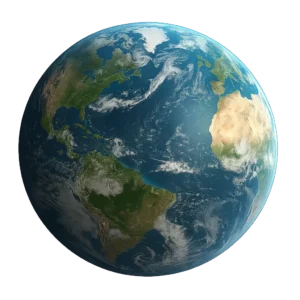 [/ca
[/ca
She gave them to me. I was surprised when I held them. The frame was smooth and warm. I put them on. The room slowly faded away and I found myself high above the Earth. The blue oceans, the clouds, and the continents were right in front of me.
A control screen appeared with two options: Instant Stop and Slow Stop.
Sarah’s voice came to me, calm and clear. “Choose one and you will see what happens when the Earth stops rotating.”
Why Does the Earth Rotate and Why Don’t We Feel It?
Sarah’s voice guided me inside the simulation. “Before we stop the Earth, you need to understand why it spins.”
She showed a scene from billions of years ago. Dust, rocks, and gas floated in space, slowly coming together to form our planet. As the pieces combined, the force of the collision made the young Earth spin, just like a ball that keeps turning after being thrown.
“It has been spinning ever since,” Sarah said. “There is no air in space to slow it down quickly, so it just keeps turning.”
I asked why we never feel this movement. She smiled. “Because the Earth spins at a steady speed, and we are moving with it. It’s like sitting in a smooth train. You only feel movement if the train suddenly speeds up or stops. As long as it moves evenly, you feel nothing.”
The scene in the HoloSpecs changed again, showing the Earth as it is now. Clouds drifted over blue oceans. Continents slowly passed under the bright Sun. Everything looked peaceful… but that was about to change.
What Would Happen in the First Few Minutes if Earth Stopped Rotating Suddenly?

I pressed the Instant Stop button.
It happened so fast that I didn’t even have time to blink. My body felt like it was being pulled forward hard. Sarah explained, “Right now, at the equator, the Earth is moving at about 1,670 kilometers per hour. If it stops suddenly, everything on the surface will keep moving at that speed.”
The simulation showed cities shaking violently. Tall buildings bent and cracked. Cars, buses, and trees were thrown forward like toys. Oceans rose into massive walls of water. Waves smashed into coastlines, flooding everything.
I could hear the deafening roar of the wind. It was stronger than any storm I had ever imagined. I felt the air hitting my face, making it hard to breathe.
“This is inertia,” Sarah’s explained. “Everything keeps moving even though the ground has stopped. And without rotation, gravity feels slightly stronger here at the equator. That is why your feet feel heavier now.”
The ground cracked open in some places. Roads split apart. Power lines fell. Ships in the ocean were carried far from their original locations.
Sarah paused for a moment before speaking again. “And this is only the beginning. In the next hours, the sky will change, the Sun will stop moving, and weather systems will start to collapse.”
How the World Would Change in the Next Few Hours
Sarah’s voice stayed calm, but the scene in front of me was far from calm. The simulation fast-forwarded. I could see the Sun stuck in the same position in the sky. “Without rotation, the day and night cycle ends,” she said. “One side of the Earth will keep facing the Sun, the other side will stay in darkness.”
On the day side, the heat started rising quickly. Grass turned yellow. Trees began to dry and burn. On the night side, I could see frost spreading across the land. Rivers froze. The air became misty with ice crystals.
The oceans did not calm down. Massive waves kept hitting new areas. Some coastal cities disappeared under water. Inland areas were flooded too, because water was rushing toward new low points created by the sudden stop.
Wind patterns went out of control. Without the spin to guide them, storms started forming in strange places. Deserts got sudden rain, while green lands became dry.
Sarah zoomed in on a city. People were confused. Some tried to move to safer areas, but roads were broken. Communication lines were down. “This is when society starts to break,” she said. “Without balance in nature, humans struggle to survive.”
I could feel the air getting warmer on my skin, even though I was only watching a simulation. My mind knew it wasn’t real, but my body felt like it was. That’s how real the HoloSpecs made it.
What Would Happen If the Earth Stopped Slowly
Sarah switched the control panel to the second option. “Now,” she said, “let’s see what happens if the Earth slows down little by little.”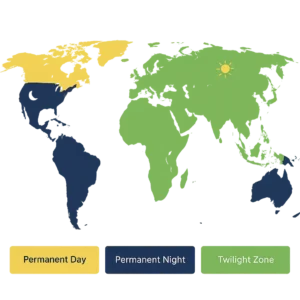
The Sun in the simulation began to move more slowly across the sky. Days started getting longer. At first, people enjoyed it longer daylight meant more time outside. But soon, the heat began to build.
On the side facing the Sun, the temperature kept rising all day without a break. Crops dried out. Water in lakes and rivers began to shrink. On the night side, the cold became extreme. Ice formed on the ground and stayed for many days.
Sarah showed me a map. A thin strip of land, called the “twilight zone,” had mild temperatures because it stayed between day and night. “This is where people would try to live,” she explained. “But there is only so much space, and billions of people would try to move there.”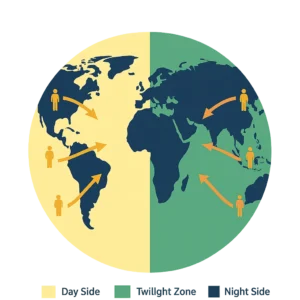
The weather systems changed completely. Without normal rotation, winds no longer followed their usual paths. Rain stopped in many areas. In others, it poured for weeks. The oceans also shifted, moving water toward the poles. Some countries lost land to rising seas, while others became dry deserts.
In the twilight zone, survival was still hard. “Food would be the biggest problem,” Sarah said. “Only a few crops could grow in these strange conditions. People would need technology to make artificial sunlight or create climate-controlled domes.”
The simulation zoomed in on one such dome, a glowing structure in the middle of frozen land. Inside, plants grew under bright lights. People moved slowly inside warm corridors. Outside the dome, the land was empty and silent.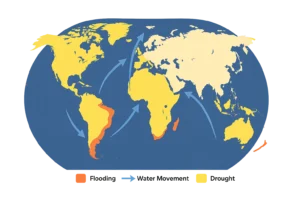
I realised this slow stop was less violent than the instant stop, but the long-term effects were still dangerous. Sarah looked at me and said, “Whether it is sudden or slow, a still Earth cannot give life the balance it needs.”
What If the Earth’s Core Stopped Too
The simulation shifted again. Sarah tapped on the control panel and said, “Now we will see what happens if not only the rotation stops, but the Earth’s core also stops moving.”
Instantly, the view went deep under the ground. I could see a glowing, moving liquid layer, the molten iron and nickel that spins inside the Earth. “This motion creates our magnetic field,” Sarah explained. “It is like a shield that protects us from harmful solar radiation.”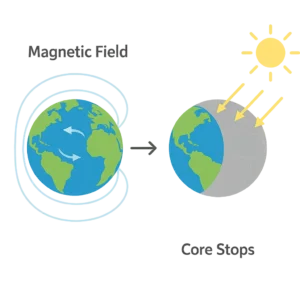
- When the core stopped in the simulation, the glowing layer froze. The blue-green magnetic shield around the planet began to fade.
I was taken back to the surface. The changes were frightening. The skies had strange colours. Streams of radiation from the Sun began to hit the atmosphere. Electronics sparked and failed. Satellites in orbit stopped working.
Sarah pointed to plants turning brown and animals struggling to move. “Without the magnetic field, too much radiation reaches the surface. It affects weather, health, and life itself. Humans would have to live underground or inside protective shelters.”
In the oceans, many species began to disappear. Coral reefs died. Fish populations dropped. On land, farming became almost impossible without artificial protection.
The Earth, once full of movement and life, looked silent and empty in the simulation.
I felt a chill, even though I knew this was not real. Sarah said quietly, “A still Earth with a still core is not a planet where humans can survive for long.”
Could the Earth Ever Really Stop?
The simulation slowed, and I could not take it anymore. My heart was beating fast, my hands felt cold. I quickly took off the HoloSpecs.
For a few seconds, I just sat there, breathing heavily, looking around to make sure everything was real and safe again. My eyes moved from the desk to the window, checking the world outside.
Sarah came closer and handed me a glass of water. “It’s okay,” she said softly. “You’re back here now.”
I drank the water slowly. My breathing became normal again.
“It felt like I just had a terrible dream,” I told her. “But now I understand. The Earth’s rotation, which we never feel, is such a huge blessing from God. Everything works in perfect balance because of it. If we could feel the spin all the time, life would be uncomfortable and disturbed. The fact that we do not notice it… that’s what makes life calm.”
I paused and then looked at her. “But Dr.Sarah, is it possible that one day the Earth could actually stop?”
She gave a small smile and said, “Let’s talk about that.”
Dr. Sarah leaned back in her chair. “No, in our lifetime, it is not possible for Earth to just stop. It would take something massive, like a collision with another planet-sized object, to make that happen. And that is extremely unlikely. Naturally, the Earth’s rotation slows down very, very slowly over billions of years, but it will keep spinning for a long, long time.”
I felt relieved. I placed the HoloSpecs back on her desk. “So, this is just a ‘what if’,” I said, “but it shows how precious our planet’s balance really is.”
Dr. Sarah nodded. “Exactly. Sometimes, you need to imagine the impossible to understand the value of what you already have.”
As I stepped out of Dr. Sarah’s lab, I looked up at the sky. The Sun was slowly moving toward the horizon, just as it always had. For the first time, I truly noticed how peaceful it felt — and how lucky we are that the Earth keeps spinning quietly beneath our feet.
